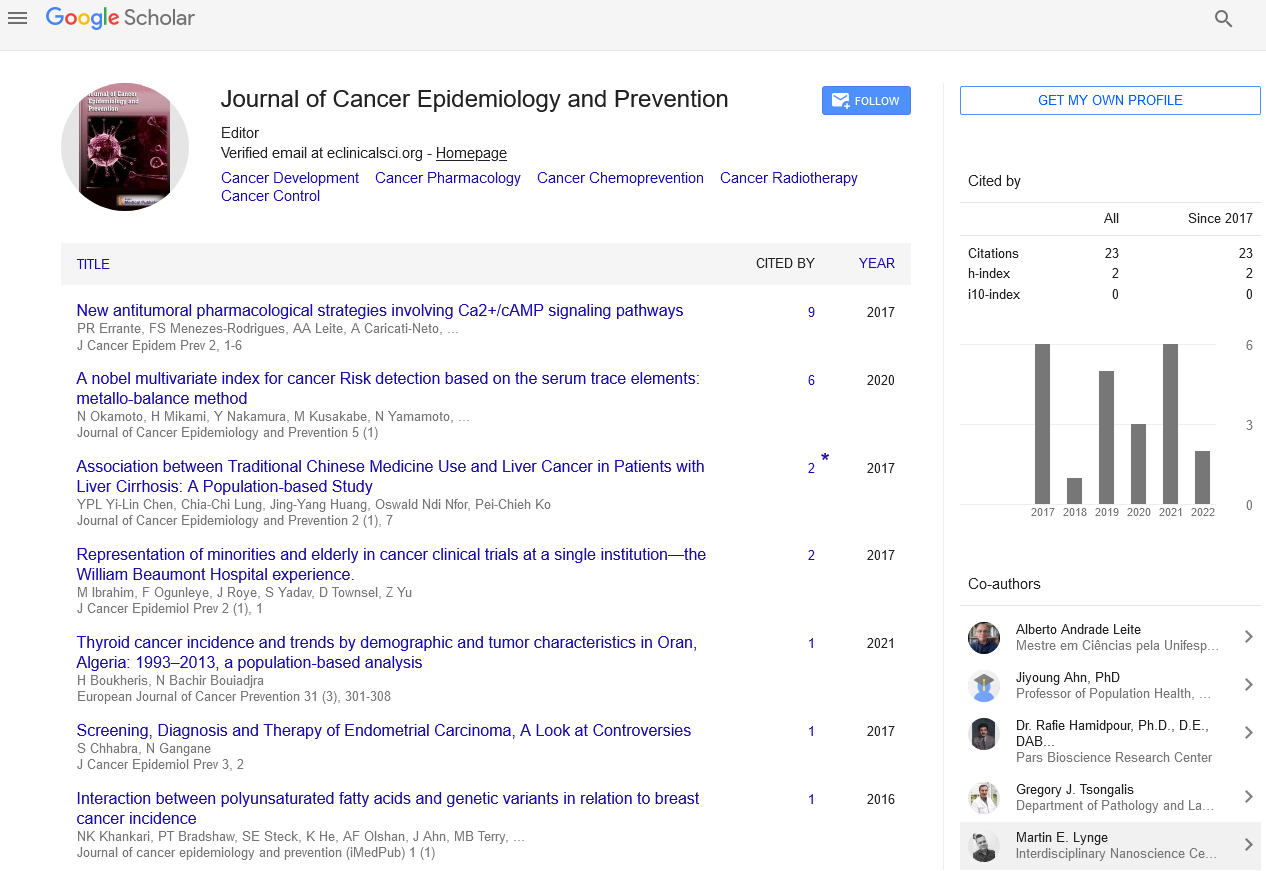Itrat Mehdi*
Itrat Mehdi, Senior Consultant, Medical Oncology, National Oncology Centre, Royal Hospital, Muscat, Sultanate of Oman
- *Corresponding Author:
- Itrat Mehdi, Itrat Mehdi
Senior Consultant, Medical Oncology, National Oncology Centre, Royal Hospital, Muscat, Sultanate of Oman
Received date: 4 June 2021; Accepted date: 18 Jun 2020; Published date: 2 July 2020
Citation: Itrat Mehdi (2021) Pervasiveness and Associated Factors of Cervical Cancer. Vol.6 No.3.4
Introduction
Pancreatic cancer develops when uncontrolled cell growth begins
during a part of the pancreas. Symptoms include jaundice and
abdominal pain, but these might not appear until the later stages.
The pancreas is found behind the stomach within the back of
the abdomen, near the gallbladder. It contains glands that make
hormones, including insulin, and enzymes. Pancreatic cancer
arises when cells within the pancreas, a glandular organ behind
the stomach, begin to multiply out of control and form a mass.
These cancerous cells have the ability to invade other parts of the
body. A number of types of pancreatic cancer are known.
The risk of developing pancreatic cancer is lower among
nonsmokers, and people who maintain a healthy weight and limit
their consumption of red or processed meat. Smokers' chances of
developing the disease decrease if they stop smoking and almost
return thereto of the remainder of the population after 20 years.
Pancreatic cancer are often treated with surgery, radiotherapy,
chemotherapy, palliative care, or a combination of these.
Treatment options are partly based on the cancer stage. Surgery is
the only treatment that can cure pancreatic adenocarcinoma, and
may also be done to improve quality of life without the potential
for cure. Pain management and medications to improve digestion
are sometimes needed. Early palliative care is recommended
even for those receiving treatment that aims for a cure.
The carcinoma Action Network urges Black Americans to
participate in clinical trials. This not only gives them access to
treatment which may rather be unavailable, but it also increases
the likelihood of research taking Black people’s needs under
consideration. Most pancreatic cancer patients are diagnosed
with advanced cancer. Patients diagnosed at an earlier stage also
can develop advanced cancer if it spreads.
Pancreatic cancer types can be divided into two larger categories:
exocrine pancreatic cancer, which includes adenocarcinoma, and
neuroendocrine pancreatic cancer. Each category has several
cancer types that may vary in their symptoms and prognosis.
Exocrine (N"art-17">Pancreas exocrine secretion represents a posh response to a meal which involves the coordinated
release and transport of enzymes from acinar cells and fluid and
electrolytes from duct cells into the pancreatic ductal system
and then into the duodenal lumen where they are required for
normal digestion.
The next-most common type, acinar cell carcinoma of the
pancreas, arises in the clusters of cells that produce these
enzymes, and represents 5% of exocrine pancreas ancers. Like
the 'functioning' endocrine cancers described below; acinar cell
carcinomas may cause over-production of certain molecules, in
this case digestive enzymes, which may cause symptoms such as
skin rashes and joint pain.
Neuroendocrine cells are like nerve cells in some ways and like
hormone-making endocrine cells in other ways. Cells during
this system don't form actual organs. Instead, they're scattered
throughout other organs just like the esophagus, stomach,
pancreas, intestines, and lungs.
Neuroendocrine cells (sometimes just called endocrine cells) in
the pancreas are found in small clusters called islets (or islets of
Langerhans). These islets make important hormones like insulin
and glucagon (which help control blood glucose levels), and
release them directly into the blood.
Pain in the upper abdomen or back, often spreading from around
the stomach to the back. The location of the pain can indicate the
part of the pancreas where a tumor is located. The pain may be
worse at night and may increase over time to become severe and
unremitting. It may be slightly relieved by bending forward. In the
UK, about half of new cases of pancreatic cancer are diagnosed
following a visit to a hospital emergency department for pain or
jaundice.
Pancreatic cancer develops when uncontrolled cell growth begins
during a part of the pancreas. Symptoms include jaundice and
abdominal pain, but these might not appear until the later stages.
The pancreas is found behind the stomach within the back of
the abdomen, near the gallbladder. It contains glands that make
hormones, including insulin, and enzymes.

